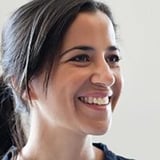Summary
How do you evaluate designers fairly and effectively while providing a clear path toward career advancement? This is a question our organization has grappled with throughout our eight years as a company. Design can often be left up to gut reasoning by leadership and designers may not have a clear understanding of what their role means and how they may grow as designers. We’ve developed iterations of different tools and processes over the years to address these concerns and to evolve with our shifting needs as a growing company. All of which has led us to a robust tool that we’ve been using over the past two years which can serve as a model for how organizations can deploy qualitative career advancement. The session will cover our journey to this point and showcase the tools and processes we’ve deployed to make evaluation and career advancement systematic within a design organization along with surprising benefits and lessons we’ve learned along the way.
Key Insights
-
•
Grant Studio’s evaluation system uses a transparent, weighted career path covering craft, quality, client, and team categories to fairly assess designers.
-
•
Continuous anonymous feedback between team members after each project provides timely, goal-constrained input for growth.
-
•
Career managers mentor designers and advocate for their promotion and staffing based on synthesized feedback.
-
•
The career path tool is a customized Google Sheet to allow easy experimentation and full understanding of processes.
-
•
Craft and quality are weighted heavier for junior roles; client and team collaboration gain importance at leadership levels.
-
•
Non-linear and lateral career moves are harder to evaluate, with Grant Studio still refining assessments for such paths.
-
•
Leadership transitions require additional training beyond readiness indicated by the career path evaluations.
-
•
Client evaluations focus on studio-wide feedback rather than individual designers to respect client time and relationships.
-
•
The system fosters a sense of safety and clarity around career progression, aiding retention and alignment with company goals.
-
•
Challenges include varying quality of feedback and limited attention to role adjustments for accessibility or disabilities.
Notable Quotes
"Even before adding ambiguity, design roles like lead designer can mean very different things across places."
"Design is collaborative, making it hard to evaluate a single design output."
"We developed a career path that defines expectations to make evaluations fair and consistent across roles."
"Continuous feedback after each project happens anonymously and is goal-focused to improve relevance."
"The career path is a weighted system where roles emphasize different categories like craft or client."
"We chose a Google Sheet so we know what’s going on under the hood and can quickly make adjustments."
"The career path has helped us improve retention, staffing, and mentoring within the studio."
"People see either all their accomplishments or all their gaps—it’s not a race to fill the pages."
"Non-linear careers are tough to manage, and we’re still figuring out how to evaluate those paths."
"We haven’t considered adjustments for accessibility yet, but it’s an important future area."
Or choose a question:
















More Videos

"Can you show me your process, not just your portfolio? That shows me your real design thinking."
Adam Cutler Karen Pascoe Ian Swinson Susan WorthmanDiscussion
June 8, 2016

"Playing politics in UX leadership is about maximizing relationships ethically to advance your agenda, not about being underhanded."
Peter MerholzThe Trials and Tribulations of Directors of UX (Videoconference)
July 13, 2023

"In the automotive industry, most safety standards only became mandatory after governments intervened."
Lisa WelchmanCleaning Up Our Mess: Digital Governance for Designers
June 14, 2018

"We need to rethink how our cities are designed and function."
Vincent BrathwaiteOpener: Past, Present, and Future—Closing the Racial Divide in Design Teams
October 22, 2020

"The greatest sign of success for a teacher is just to be able to say the children are now working as if I did not exist."
Brenna FallonLearning Over Outcomes
October 24, 2019

"Never be afraid to get into good trouble; start by asking why."
Tricia WangSpatial Collapse: Designing for Emergent Culture
January 8, 2024

"We used a Python algorithm with a correlation matrix to identify meaningful clusters from survey responses."
Edgar Anzaldua MorenoUsing Research to Determine Unique Value Proposition
March 11, 2021
"Our brains are terrible at operating only on one type of information, whether object-oriented or context-oriented."
Designing Systems at Scale
November 7, 2018

"The conversion design process creates collective knowledge, which gets reinfused to strengthen future experiments."
Erin WeigelGet Your Whole Team Testing to Design for Impact
July 24, 2024
















